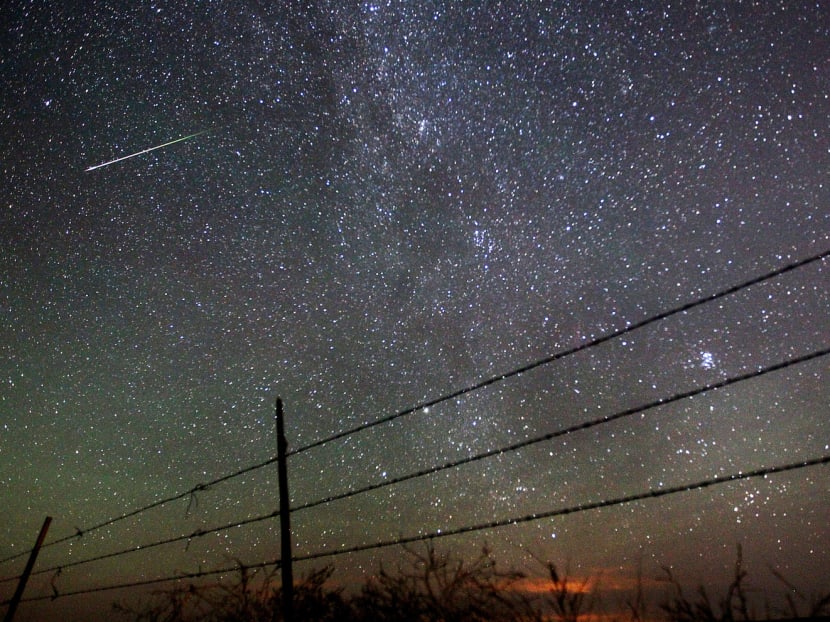Perseid ‘outburst’ expected to reach up to 200 meteors per hour
CAPE CANAVERAL (Florida) — The heavens will be bursting with shooting stars this week.

A Perseid meteor shower in August 2013, streaking past the Milky Way above Wyoming, in the United States.
In Singapore, stargazers should watch the event from a dark place and face the northeastern sky. Photo: AP
CAPE CANAVERAL (Florida) — The heavens will be bursting with shooting stars this week.
The annual Perseid meteor shower is expected to peak with double the normal number of meteors. Scientists call this an outburst, and they say it could reach up to 200 meteors per hour.
In a Facebook post on Monday, Singapore’s Science Centre Observatory said it was “keeping fingers crossed for clear skies this week”, and gave some tips to those who hope to catch the meteor shower.
The tips include the ideal observation time — after moonset, or around 3am to 6am — and that stargazers would do well to observe from a dark place and face the northeastern sky.
The last Perseid outburst was in 2009. Thanks to a gravity nudge from Jupiter, debris from comet Swift-Tuttle could stray closer to Earth again.
These scattered specks of dust — a trail in the comet’s wake — are what flash as they enter the atmosphere at 212,433kmh and burn up.
“Here’s something to think about. The meteors you’ll see this year are from comet fly-bys that occurred hundreds, if not thousands, of years ago,” said Nasa meteor expert Bill Cooke in a statement.
“And they’ve travelled billions of miles before their kamikaze run into Earth’s atmosphere.”
Scientists hope to capture the action with a new instrument at the International Space Station. The US-Japanese experiment is appropriately named Meteor.
An August tradition, the Perseids are so named because the meteors appear to emanate from the constellation Perseus, the Medusa-killing hero of Greek mythology. AP





